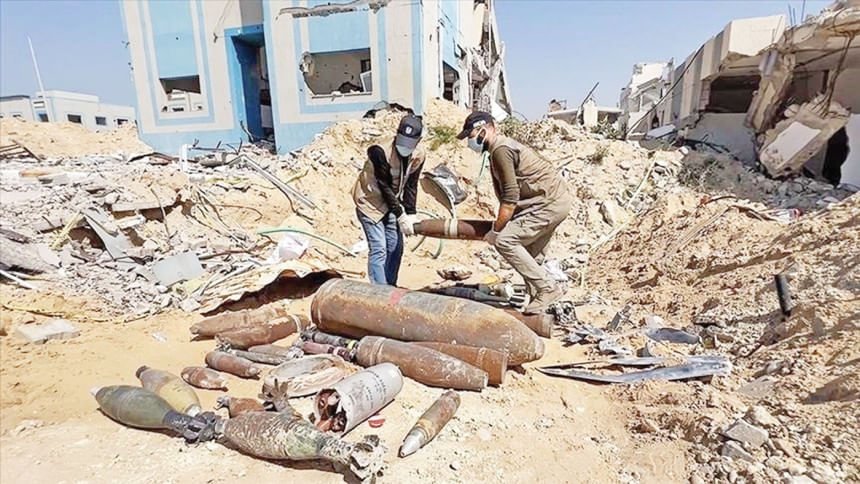Unexploded ordnance in Gaza presents significant dangers for returning displaced individuals amid a ceasefire led by the US, Handicap International cautioned on Tuesday, emphasizing the crucial need for demining equipment to be allowed entry.
“The risks are substantial – an estimated 70,000 tons of explosives have been deployed in Gaza since the conflict began,” stated Anne-Claire Yaeesh, the director for the Palestinian territories at Handicap International, a specialized organization in mine clearance and aid for victims of anti-personnel mines.
Over the past two years of conflict in Gaza, unexploded ordnance, including undetonated bombs, grenades, and bullets, has become a common and hazardous presence. In a report from January, the UN’s Mine Action Service (UNMAS) estimated that “5 to 10 percent” of the munitions used in Gaza had failed to detonate.
UNMAS acknowledged that due to imposed restrictions, comprehensive survey operations in Gaza have been limited. However, with the recent surge in requests for technical assistance following the ceasefire implemented on October 10, UNMAS has been actively engaged in various humanitarian tasks, including missions in previously inaccessible areas.
In the upcoming days, a major focus will be on ensuring the safety of debris management operations and clearing rubble, especially along the pathways used by the returning displaced population.
While the UN Office for the Coordination of Humanitarian Affairs announced plans to evaluate key roads for explosive threats, UNMAS highlighted the challenge of limited armored vehicles on-site, restricting the number of daily explosive hazard assessments that can be conducted.
Moreover, UNMAS revealed that it is still awaiting authorization from Israeli authorities to bring in the necessary equipment for the safe disposal of unexploded ordnance.

